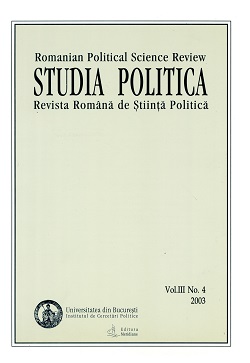Who Was the First in Transylvania. On the Origins of the Romanian-Hungarian Controversy over Minority Right
Who Was the First in Transylvania. On the Origins of the Romanian-Hungarian Controversy over Minority Right
Author(s): Cristina PetrescuSubject(s): History, Law, Constitution, Jurisprudence, Human Rights and Humanitarian Law, Recent History (1900 till today), Special Historiographies:, Transformation Period (1990 - 2010), Post-Communist Transformation
Published by: Editura Universităţii din Bucureşti
Keywords: minority rights; public sphere; debates; the Origins;
Summary/Abstract: After the collapse of communism, among the issues that surfaced in the public sphere and stirred endless debates, the rights of the Hungarian minority had not only the greatest societal impact, but also serious consequences on Romania's image abroad. The regime of Nicolae Ceaușescu, which was ideologically grounded in the most organically developed blend of communism and nationalism in the entire Soviet bloc, was heavily criticized, especially during its last decade, for orchestrating a silent policy of assimilation primarily targeting the Transylvanian Hungarians. Until the electoral revolution of 1996, the unwillingness of the post-communist authorities to satisfy the demands of the Hungarian community in their entirety was internationally perceived as a powerful, enduring legacy of the Romanian national-communism1. Considered a manifestation of outdated nationalism, if not of sheer xenophobia, the way in which the issue of minority rights was tackled by the first two Iliescu regimes ranked high among the factors that contributed to Romania's belated start in the race for Europe.
Journal: Studia Politica. Romanian Political Science Review
- Issue Year: 3/2003
- Issue No: 4
- Page Range: 1119-1148
- Page Count: 30
- Language: English

